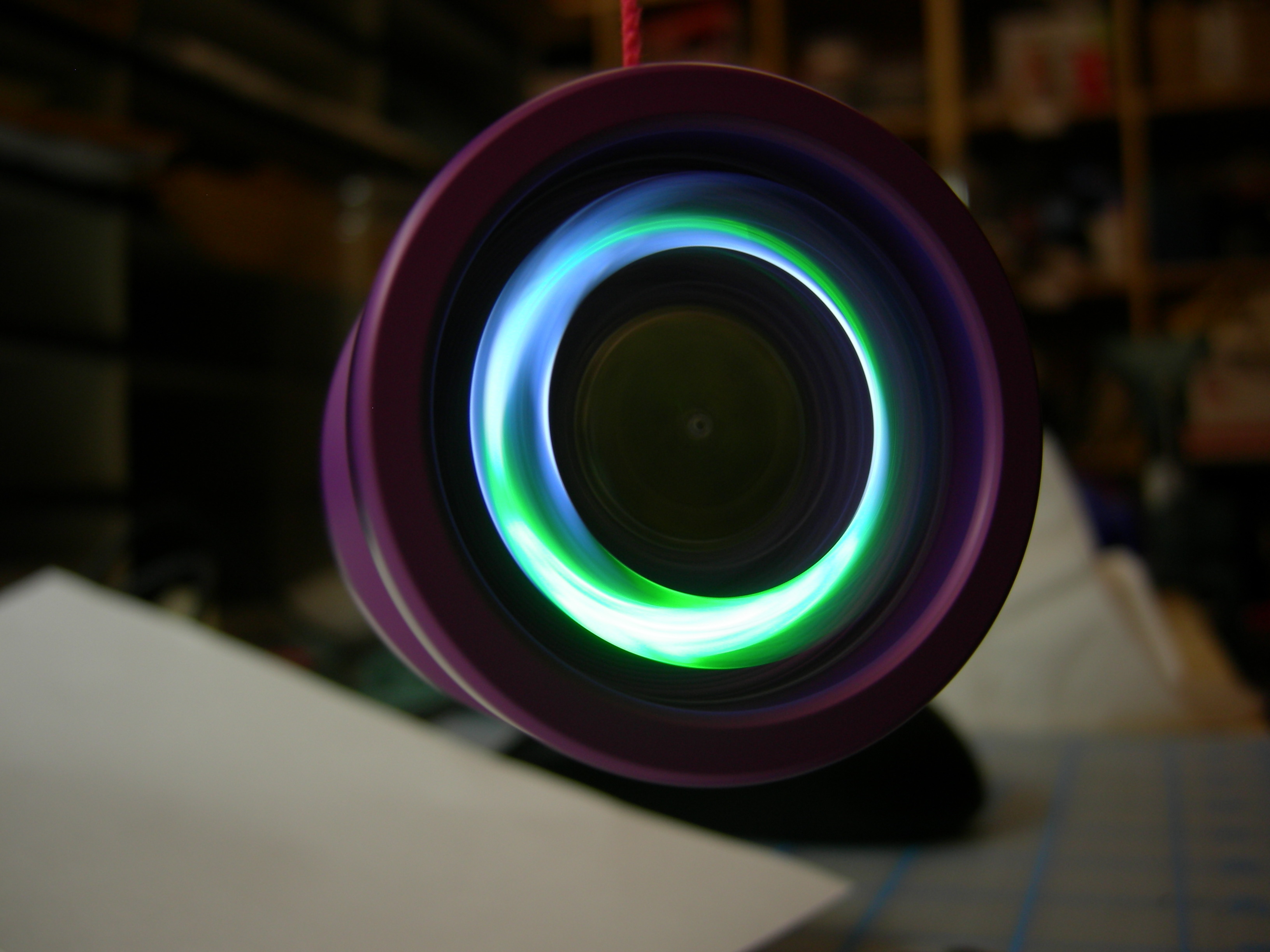There aren’t many low-budget ways to customize one’s yo-yo. The most common ones are either painting or dyeing, but they’re limited: paint chips off with time, and dyeing is only for plastic yo-yos.
Being a yo-yo fanatic, I regularly visit the blog Yoyoskills.com for yo-yo news. There I recently read a post about spin-activated LED side caps that fit into the side of yo-yos. They are low-cost ($6) and look very cool; a perfect customizing add-on for any yo-yo. Unfortunately, they only come in one size, thus only fitting a few yo-yos. I thought it’d be a fun project to make my own set (and it was!). Here’s my guide to making your own. I used a One Drop Project yo-yo because it has a nice flat hub that leaves plenty of room for side caps, but you can use pretty much any yo-yo that’s got concave sides.
How It Works
Using the centrifugal force generated by the spinning of the yo-yo, the spring, acting as the switch, is pulled outward. It makes contact with the positive leads of the LEDs, thus completing the circuit, turning the LEDs on.




